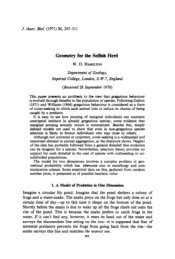Chapter 6 - Ethical Culture Fieldston School
Chapter 6 - Ethical Culture Fieldston School
Chapter 6 - Ethical Culture Fieldston School
Create successful ePaper yourself
Turn your PDF publications into a flip-book with our unique Google optimized e-Paper software.
“Mr. Sinatra Gets Rejected”<br />
lacked an obvious channel for yearnings that remained inchoate well into his<br />
adolescence. Anyone reading a Sinatra biography looking for a childhood<br />
incident that would foreshadow his future will be largely disappointed; while<br />
there are scattered references to him singing to friends or at family gatherings,<br />
there’s little here to distinguish such an activity from a passion for baseball or a<br />
knack for drawing. Most accounts of his youth emphasize Dolly’s and Martin’s<br />
skepticism about their son’s growing interest in a singing career (they hoped he<br />
would attend nearby Stevens Institute and become an engineer). Though Dolly<br />
eventually bought him a sound system and a car to allow him to pursue his<br />
avocation, one suspects this had less to do with her belief that he could become a<br />
singing star – who, after all, could really make a living doing that? – than it did<br />
her long‐standing strategy of making sure her son had enough money in his<br />
pocket to treat, and thus make, plenty of friends.<br />
The epiphany, virtually everyone agrees, took place in the spring of 1935<br />
when the nineteen year‐old Sinatra took his girlfriend, Nancy Barbato, to see<br />
Bing Crosby, the premier popular singer of his day. Crosby’s appeal had less to<br />
do with the pure beauty of his voice than his ability to exploit the cultural<br />
possibilities of new technology, specifically that of the microphone. By singing in<br />
a smooth, subtly modulated voice – a style that came to be known as “crooning”<br />
– Crosby distinguished himself from more powerful vocalists like Al Jolson and<br />
Sophie Tucker, who attained their pre‐eminence as “belters” who could project<br />
their voices to the far corners of a room. Moreover, Crosby’s image matched his<br />
singing style: that of an elegantly dressed, pipe‐smoking smoking man of leisure.<br />
Ironically, the effect of Crosby’s understated image on young Frank Sinatra was<br />
electrifying. “When I saw that guy on stage,” he reputedly told Nancy,<br />
“something happened to me. It was like I was really up there, not Crosby. I’ve<br />
American History for Cynical Beginners<br />
8
















